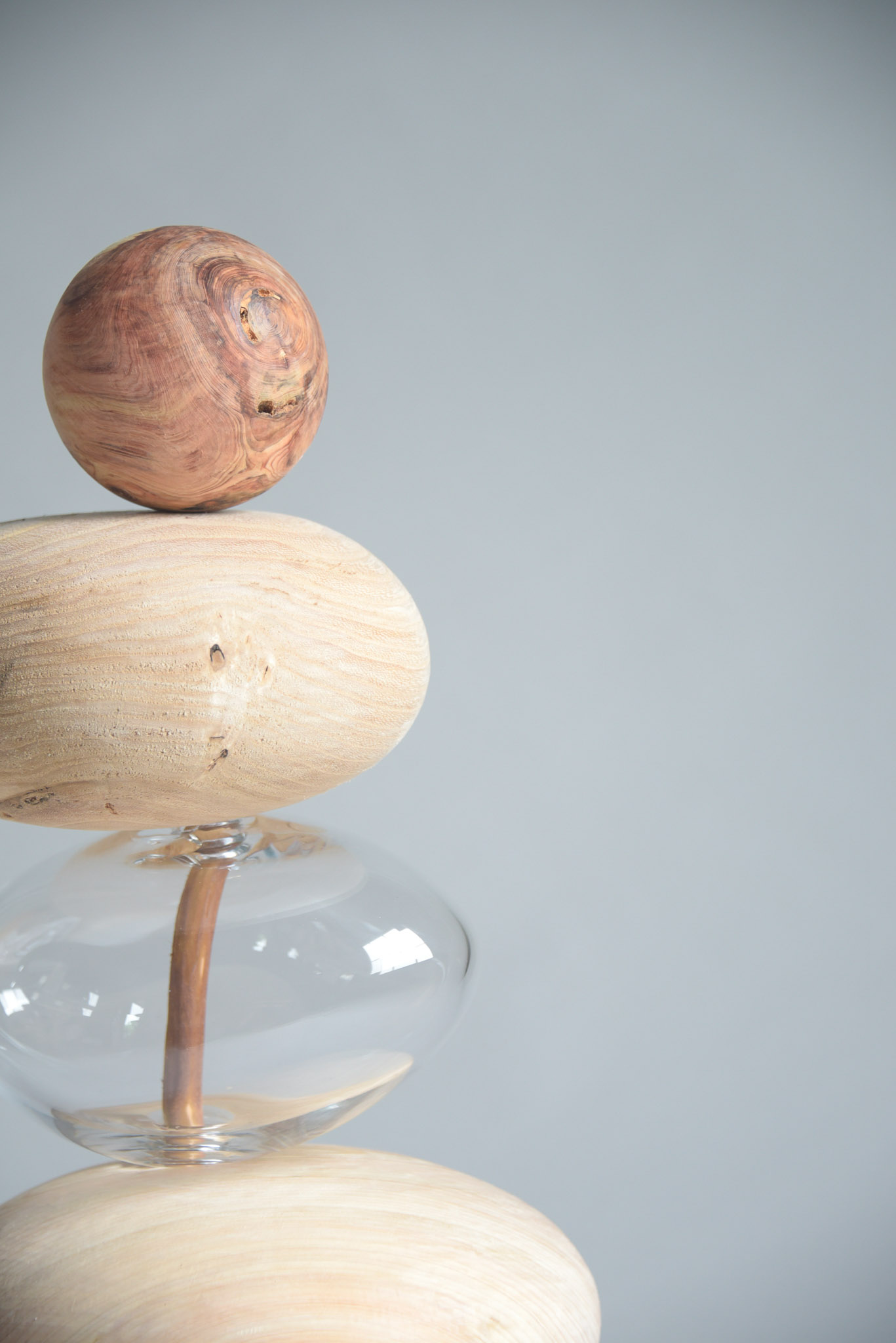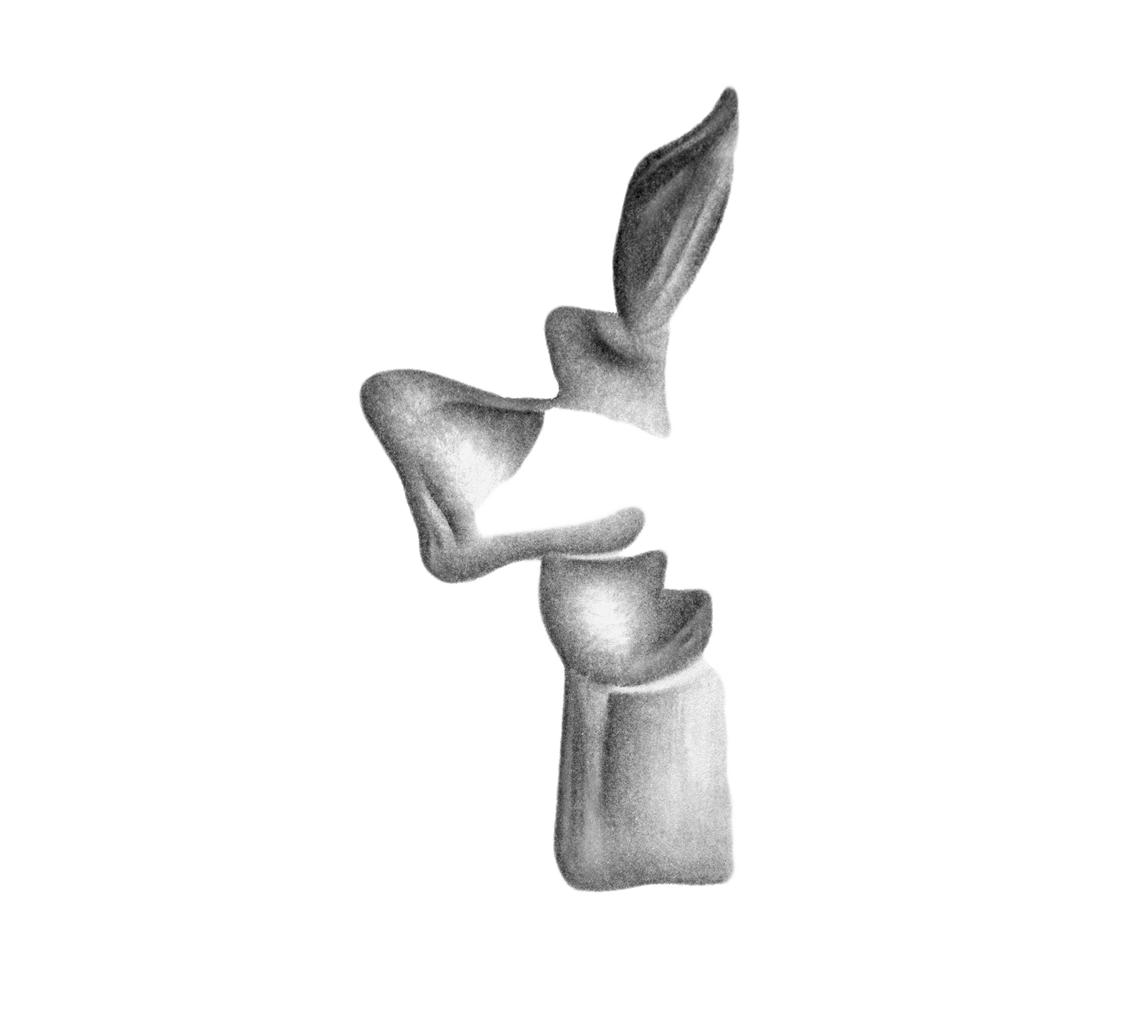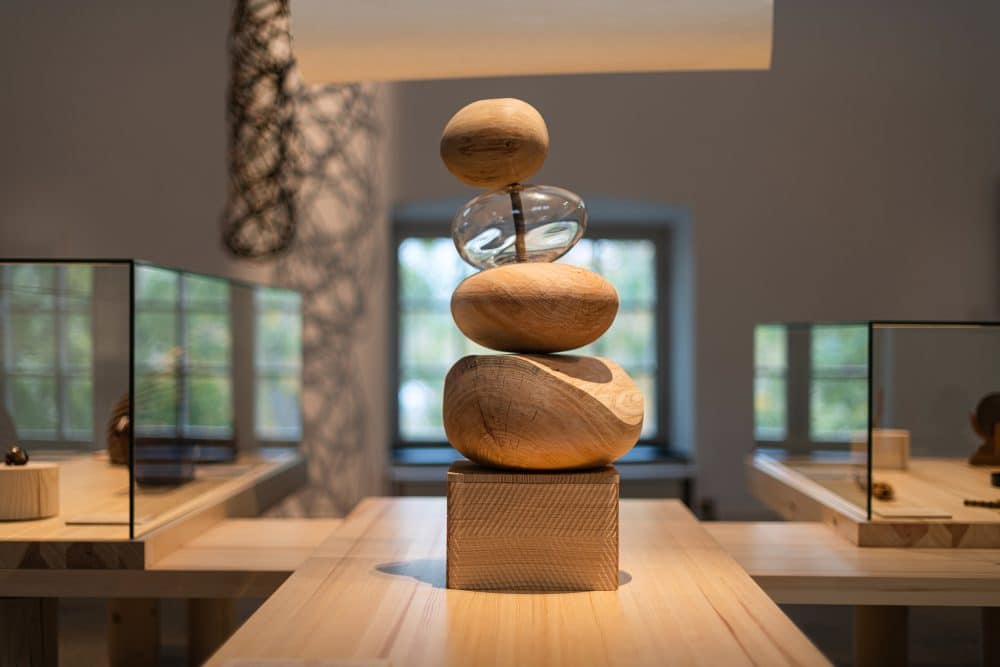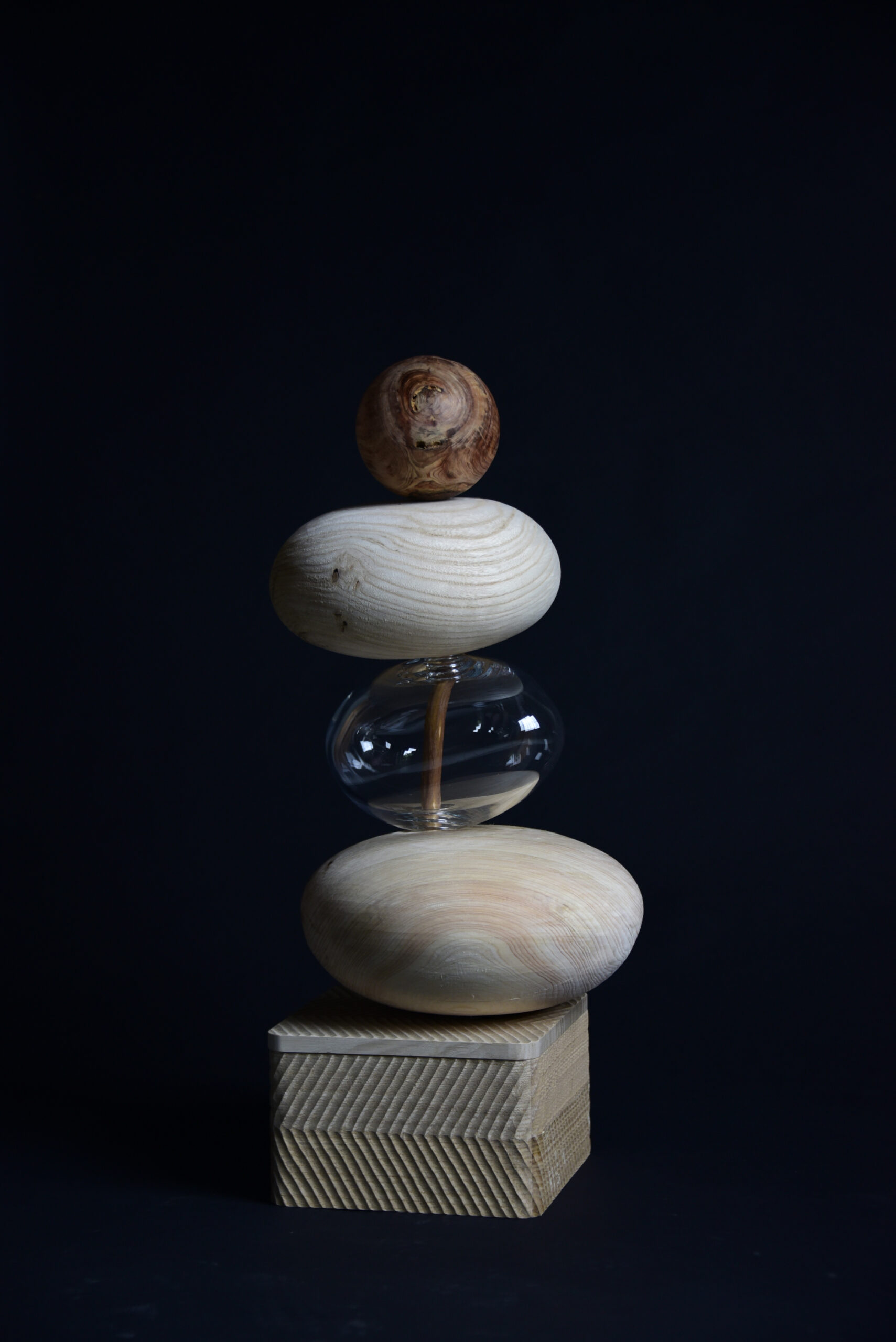
Tornet
with Masaru kawai
Tornet is an impermanent sculpture and an urn, a tactile symbol in dialogue with the endless variables of memory. It has been imagined to function as a connection between life and death. Tornet is an interpretation of the gorinto, literally meaning ‘five-elements tower’. Uniquely Japanese, the gorinto is a Buddhist symbol often found in memorial and funeral sites. As a symbol it expresses the idea that after death the physical body will return to its elemental and original form. Each shape, representing a specific element ( soil, water, fire, air and ether ), also reflects the Buddhist stages of progress through life: the will to attain perfection; attaining equanimity; energy created in pursuit of the truth; development of intuition and awareness; perfection.
The square base element is the urn in which the ashes of one’s body can be kept and buried below ground, if one wishes to be cremated. It may have been given at birth or acquired later in life. The base element is unique to each person. It holds a vertical pole on which the four other elements are placed. It is now a sculpture and presence throughout one’s life. When someone dies, the four elements are taken off from the sculpture and may be handed down, but they can also be exchanged or acquired during one’s lifetime. When the base element is buried, the pole remains above ground, connecting heaven and earth, and is left to decompose in rhythm with memory.
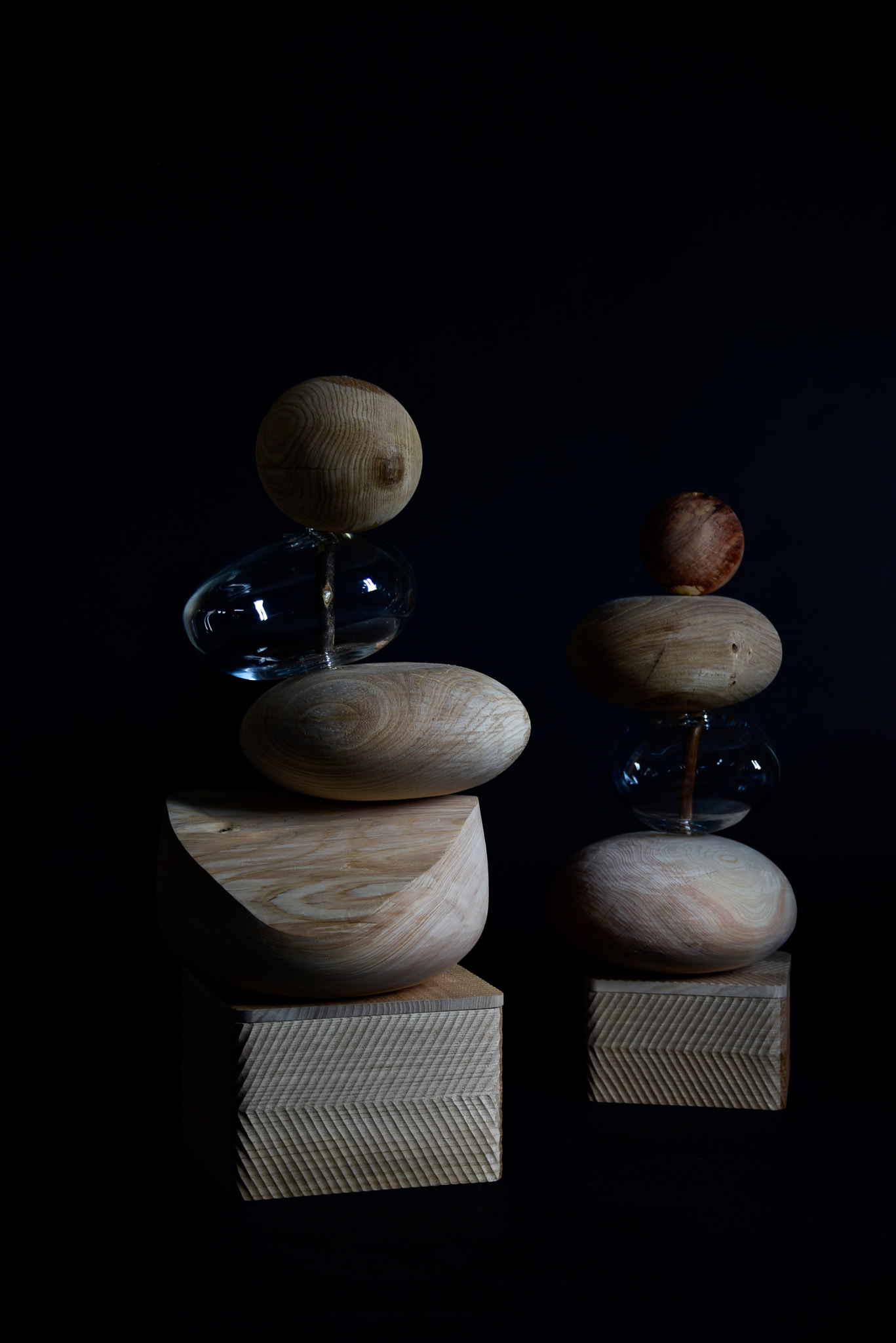
Letter about tornet
Tornet was born in a letter exchange between Masaru Kawai and myself.
I could therefore when I am 50 years old find my Tornet with one element that belonged to my great-grandmother, another that I created myself or asked a craftsman to make for me, another that I exchanged with my very best friend... I might have 12 elements in all and change the appearance of my sculpture in rhythm with the seasons or as an expression to my mood.
A living sculpture that follows me through my life and reflects its content. It keeps me in tangible contact with the cycle of life, life and death, with the many different layers of time present – a kind of root to both people and places, to the changing and the infinite and also to the materials refined by human hands and expressions, materials that have changed over time, aged, been mended, oiled... Tornet can take on a thousand and a thousand different aesthetic expressions and reflect our relationship to the feeling of beauty.
But what if we used the word in its proper sense, i.e. character, characteristic and allowed ourselves to take time to define the surroundings we are in and understand their natures - the pine forest, the mountains, the river, the meadow ?
Letter read at the workshop Building Tornet held at the Museum of East Asian Antiquities, Stockholm with Petra Lilja, September 2023
